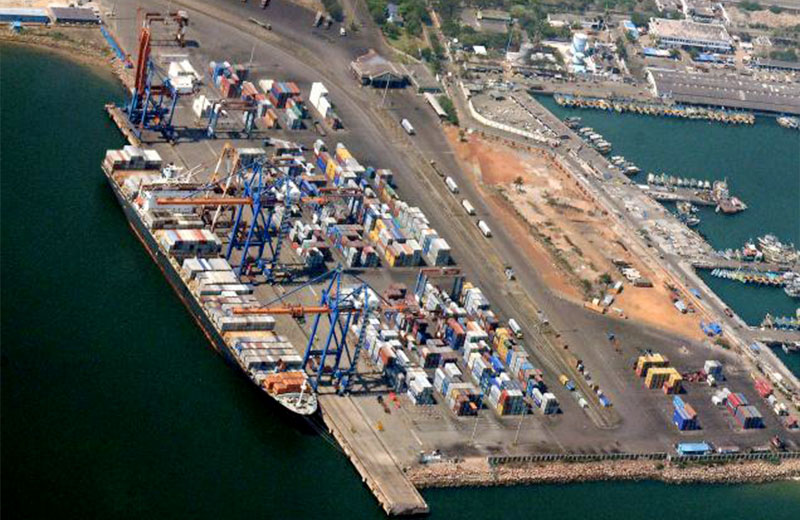[vc_row][vc_column][vc_column_text]
Traders can finally import third-country goods using Visakhapatnam Port in India, as Nepal Rastra Bank (NRB), the central bank, has allowed banks to issue letters of credit (LC) to bring in cargoes using the seaport in Andhra Pradesh.
Issuing a directive, NRB has instructed commercial banks to issue letters of credit to clients using Visakhapatnam Port in the east coast of India to bring in goods from third countries.
Goods that arrive at the port can be ferried into the country using cargo trucks and railway, says the directive. These cargoes can enter the country via Nepal-India border points located in Biratnagar, Birgunj, Bhairahawa and Nepalgunj. In Birgunj, customs offices located inside and outside the dry port can be used for clearance of Nepal-bound cargoes, says the directive.
Although the Indian government had allowed Nepal to use Visakhapatnam Port for third-country trade during former Prime Minister KP Sharma Oli’s visit to New Delhi in February, it had not formally come into operation, as banks were barred from issuing letters of credit for goods entering the country via the new trade corridor.
Letters of credit are a must for valuation of cargos at customs points, because they contain information on cost of goods, insurance and freight (CIF) based on which customs and other duties are fixed.
With the formal opening of Visakhapatnam Port, Nepal has gained access to second seaport for third-country trade. Currently, the port in Haldia, Kolkata, is the only seaport from where Nepal brings in or sends goods to third countries.
Although Visakhapatnam Port is located 1,436km away from the country, as against the distance of 704km between the Haldia port and Nepal, the port in Andhra Pradesh is expected to facilitate Nepal’s third-country trade, as it is a deepwater port, where bigger cargo vessels can be docked. Use of bigger container ships for movement of cargoes reduces ocean freight cost.
On the other hand, the Haldia port is relatively shallower and cargoes need to be reloaded into smaller vessels in Singapore before they arrive in Kolkata.
“The decision to formally bring Visakhapatnam Port into operation is good news, as container freight stations in Kolkata are becoming more congested,” Rajan Sharma, immediate past president of Nepal Freight Forwarders Association, told the Post.
He, however, said the port has come into operation without appointing a focal agency that could process documents and address logistic problems faced by freight forwarders. “If this issue is not dealt with immediately, the cost of ferrying goods via Visakhapatnam port may rise,” Sharma warned.
Earlier, freight forwarders had demanded that the government establish a consulate general’s office in Visakhapatnam, as in Kolkata, to tackle these issues. But the government has said the Nepali embassy in New Delhi would handle all the works related to the port.
The freight forwarders had also suggested that state-owned Nepal Transit Warehousing Company Limited be allowed to process documents and address logistic problems faced by freight forwarders.
“But the government did not listen to us,” said Sharma, adding, “Later we asked the government to deal directly with the Visakhapatnam Customs House, which had agreed to do so. Yet the government did not agree and decided to allow the embassy in New Delhi, which is quite far away from Visakhapatnam, to deal with us. This decision is likely to create another barrier for third country trade via Visakhapatnam Port.”
[/vc_column_text][/vc_column][/vc_row]








